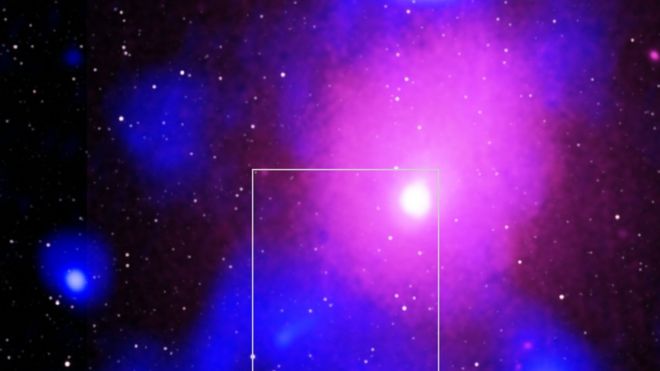- UID
- 3762
- Online time
- Hours
- Posts
- Reg time
- 19-6-2019
- Last login
- 1-1-1970
|
Edited by asr335704 at 28-2-2020 04:39 PM
Scientists have detected evidence of a colossal explosion in space - five times bigger than anything observed before. The huge release of energy is thought to have emanated from a supermassive black hole some 390 million light years from Earth. The eruption is said to have left a giant dent in the Ophiuchus galaxy cluster. Researchers reported their findings in The Astrophysical Journal.

"I've tried to put this explosion into human terms and it's really, really difficult," co-author Melanie Johnston-Hollitt told BBC News.
"The best I can do is tell you that if this explosion continued to occur over the 240 million years of the outburst - which it probably didn't, but anyway - it'd be like setting off 20 billion, billion megaton TNT explosions every thousandth of a second for the entire 240 million years. So that's comprehensibly big. Huge."
Scientists had long thought there was something strange about the Ophiuchus galaxy cluster, which is a giant aggregation containing thousands of individual galaxies intermingled with hot gas (plasma) and dark matter. US and European X-ray telescopes had spied a curious curved edge to it. The speculation was that this might be the wall of a cavity that had been sculpted in its plasma by emissions from a gargantuan black hole in one of the core galaxies.
Black holes are famous for gorging on infalling matter - any gas or even stars that happen to get too close. But they can also expel prodigious amounts of material and energy in the form of radio jets that then slam through the local environment. Scientists at first doubted the black hole explanation, however, because the cavity was so big. It implied the black hole emission would have to have been unimaginably prodigious. But new low-frequency telescope data from the Murchison Widefield Array (MWA) in Australia and the Giant Metrewave Radio Telescope (GMRT) in India seems to confirm the theory.
For more details, please read full article here: Source
|
|